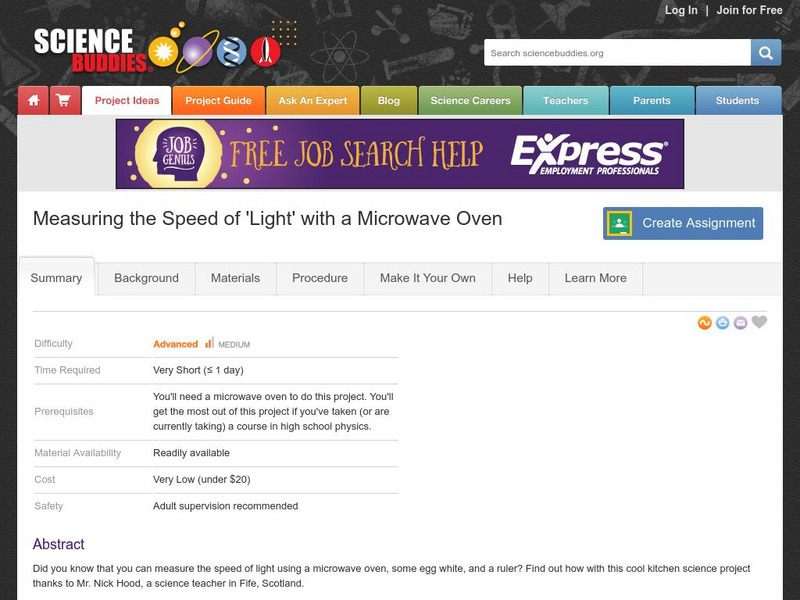TeachEngineering
Teach Engineering: Visible Light and the Electromagnetic Spectrum
In this instructional activity, the electromagnetic spectrum is explained and students learn that visible light makes up only a portion of this wide spectrum. Students also learn that engineers use electromagnetic waves for many...
Science Struck
Science Struck: Electromagnetic Energy and Why It Is Important
Explains what electromagnetic energy is, the history of its discovery, some terms used when talking about it, and gives some facts about it.
Alabama Learning Exchange
Alex: Transverse Waves
Middle schoolers will classify waves as mechanical or electromagnetic. Students will describe longitudinal and transverse waves. Middle schoolers will show a transverse wave using a slinky.This lesson plan was created as a result of the...
PBS
Pbs Teachers: Scientific American: Science in Paradise: Big Dish
Investigate the science of radio astronomy, and create a model of a curved reflecting dish that will work like the Arecibo detector to detect electromagnetic waves. Explore risk using a risk space grid.
Physics Classroom
The Physics Classroom: Polarization
"How Do We Know Light Behaves as a Wave?" An answer is provided in this discussion of the polarization of light and the use of Polaroid filters in sunglasses. The four methods discussed on this page are: polarization by transmission,...
NASA
Nasa: Imagine the Universe: Supernovae Remnants
A brief description of supernova remnants with many embedded links to help define terms used in the description. The specific topics are age and the importance of remnants to us and the types. Definitions of key words are provided.
Science Buddies
Science Buddies: Measuring the Speed of 'Light' With a Microwave Oven
In this experiment, you will measure the speed of light using a microwave oven, some egg white, and a ruler. This short project proves to be an extremely interesting choice for a science lab, with pictures for illustration, and thorough...





